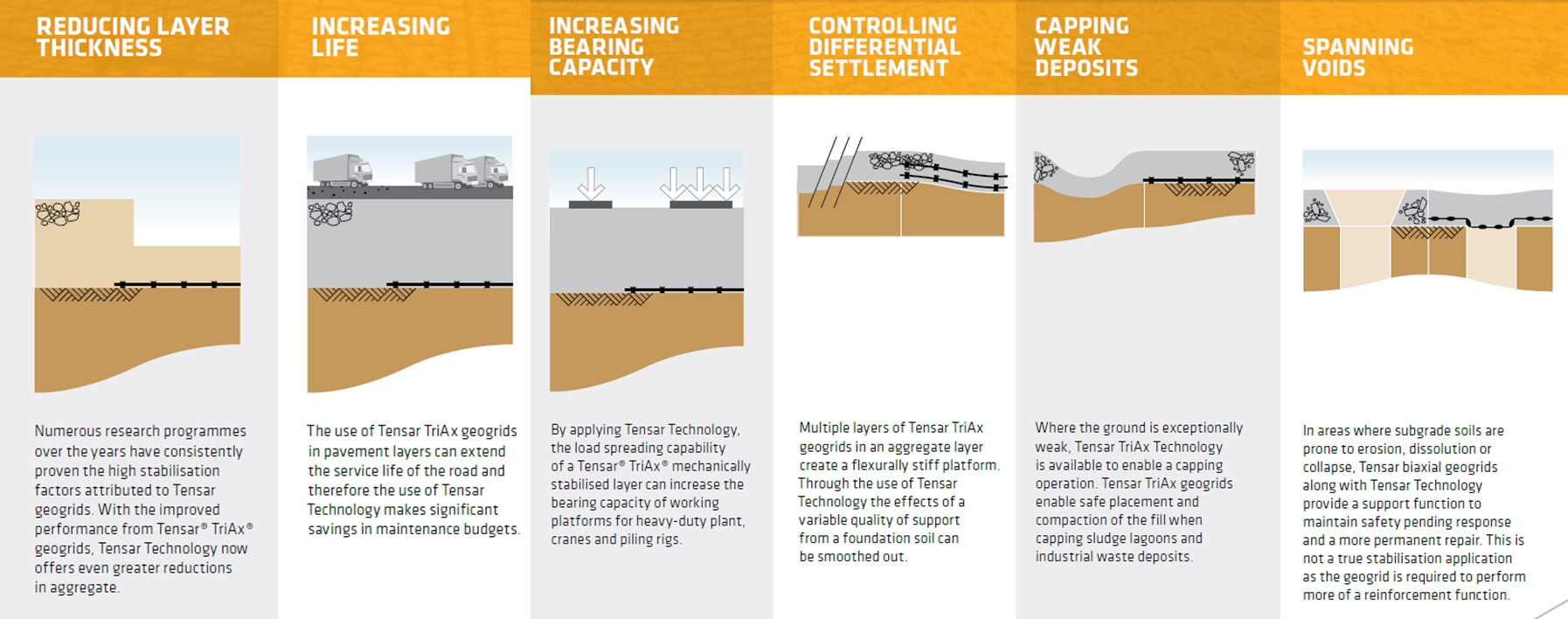Tensar® geogrids work by effectively confining and restraining granular particles due to particle interlockk with the geogrid apertures, a mechanism known as stabilisation. Tensar TriAx® geogrids have proven to be extremely efficient in confining and stabilising aggregates layers. The combination of TriAx geogrid and aggregate is called an Mechanically Stabilised Layer or MSL. This composite layer of TriAx geogrids and aggregate can have the same trafficking performance as an unstabilised layer up to twice as thick

WHY IS 'STABILISATION' DIFFERENT TO 'REINFORCEMENT'?
For geosynthetics used in roads, railways and other trafficked areas, geogrids have traditionally been seen to provide a
reinforcement fuction. However, it has been increasingly recognised that a geogrid incorporated into a granular material
can increase the performance of the layer by confinement and lateral restraint of the granular particles. There is very little
evidence that characteristics such as tensile strength are an important indicator of trafficking performance of an aggregate
with a geogrid incorporated in it. TriAx has proven to be highly effective at improving the performance of a granular layer, yet
it has relatively low values for the characteristics defined in EU harmonised standards, such as tensile strength.
For TriAx geogrids, where low strain confinement of aggregate particles in important to function, the radial in-plane stiffness
together with junction efficiency and the geometry of the geogrid were found to be important indicators of the trafficking performance
by stabilisation. Although other types of geogrid may quote values for these characteristics, they cannot demonstrate how these relate to how their
geogrids perform when trafficked.
THE MAJOR SUBGRADE STABILISATION APPLICATIONS FOR TENSAR MECHANICALLY STABILISED LAYERS
